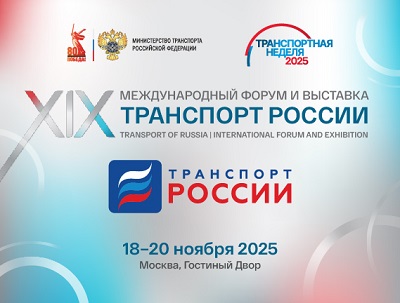Evaluation Method of Freight Car Maintainability Indices
Abstract
About the Authors
G. V. RaikovRussian Federation
S. V. Petrov
Russian Federation
References
1. Tereshina N. P., Gusev S. A., Zhakov V. V. Voprosy konkurentosposobnosti i bezopasnosti zheleznodorozhnykh perevozok v sovremennykh usloviyakh [Issues of competitiveness and safety of rail transport in modern conditions]. Ekonomika zheleznykh dorog, 2013, no. 8, pp. 43 – 54.
2. Industry Outlook. Railway Age, December 2013, p. 6.
3. High-spec biomass wagons. Modern Railways, September 2013, p. 22
4. Barbarich S. S. O sozdanii spetsializirovannogo vagonaplatformy dlya kontreylernykh i konteynernykh perevozok na ‘prostranstve 1520’ [On the construction of a specialized car-based platform for container transport and piggyback on the ‘1520 area’]. Vagony i vagonnoe khozyaystvo, 2013, no. 1, pp. 34 – 36.
5. ‘Alkoa Rossiya’ i ‘Traktornye zavody’ izgotovili innovatsionnyy alyuminievyy vagon-khopper [‘Alcoa Russia’ and ‘Tractor Plants’ produced an innovative aluminum hopper car]. Vagony i vagonnoe khozyaystvo, 2013, no. 1, p. 41.
6. Orlova A. M., Lesnichiy V. S. Telezhka tipa ‘Barber S-2 R’: pervyy etap ekspluatatsii [Barber S-2‑R bogie: The first phase of operation]. Vagony i vagonnoe khozyaystvo, 2012, no. 4, pp. 20 – 23.
7. Shelest D. A. Sovershenstvovanie tormoznykh sredstv gruzovykh poezdov postoyannogo formirovaniya: provodnoy i besprovodnoy elektropnevmaticheskie tormoza gruzovogo vagona [Improved brake means of freight trains of permanent formation: Wired and wireless electro-brake of freight cars]. Vagonnyy park, 2013, no. 1, pp. 26 – 32.
8. Prokhorova E. V., Sevryugina N. S. Bystros’emnost’ osnovnykh uzlov i agregatov i remontoprigodnost’ transportnykh sredstv [Fast-removability of basic components and assemblies and maintainability of vehicles]. Vestnik Khar’kovskogo natsional’nogo avtomobil’no-dorozhnogo universiteta [Bulletin of Kharkiv National Automobile and Highway University], 2012, no. 57, pp. 97 – 103.
9. Kalabro S. R. Printsipy i prakticheskie voprosy nadezhnosti (transl. from Engl.) [Principles and practical issues of reliability]. Moscow, Mashinostroenie Publ., 1966. 376 p.
10. Roslyakov V. I. Remontoprigodnost’ kak faktor povysheniya nadezhnosti tekhniki bytovogo i zhilishchno-kommunal’nogo naznacheniya [Maintainability as a factor in improving the reliability of household appliances and housing and public utilities]. Tekhniko-tekhnologicheskie problemy servisa, 2013, no. 1 (23), pp. 12 – 15.
11. Ivanova N. G., Stavrova E. K., Loshakova V. A. Stoimost’ zhiznennogo tsikla kak kriteriy vybora optimal’nykh tekhnicheskikh resheniy [The cost of the life cycle as a criterion for the selection of optimal technical solutions]. Ekonomika zheleznykh dorog, 2014, no. 4, pp. 65 – 71.
12. Sapozhnikov S. A. et al. Printsipy podtverzhdeniya mezhremontnykh normativov novykh modeley gruzovykh vagonov [Principles of confirmation of reserve maintenance standards of new models of freight cars]. Vagony i vagonnoe khozyaystvo, 2012, no. 2. pp. 28 – 29.
13. Grishin V. K. Statisticheskie metody analiza i planirovaniya eksperimentov [Statistical methods for the analysis and design ofexperiments]. Moscow, MSU Publ., 1975. 128 p.
Review
For citations:
Raikov G.V., Petrov S.V. Evaluation Method of Freight Car Maintainability Indices. RUSSIAN RAILWAY SCIENCE JOURNAL. 2015;(4):39-44. (In Russ.)
























































